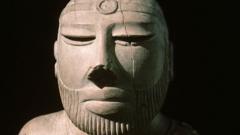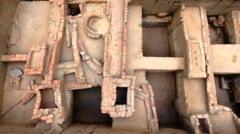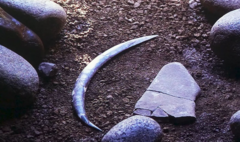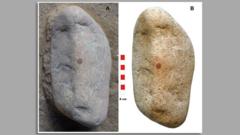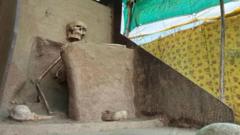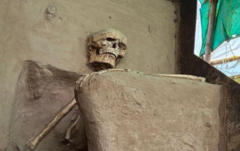The Indus script, composed of enigmatic signs and symbols, has perplexed scholars for generations. Each week, computer scientist Rajesh PN Rao receives emails from self-proclaimed codebreakers who believe they've cracked the code, with most of them hailing from India or of Indian descent. These individuals are adamant that they have deciphered the script of the ancient Indus Valley Civilisation, which thrived 5,300 years ago in parts of modern-day India and Pakistan.
Fueling this growing interest is a recent announcement from MK Stalin, the Chief Minister of Tamil Nadu, who declared a $1 million prize for anyone who can successfully decode the script. The Harappan civilization, known for its complex urban society, saw significant development long before its sudden decline— a mystery compounded by the presence of an undeciphered script that has cast a shadow over its language, culture, and governance.
Numerous experts—linguists, archaeologists, and anthropologists—have spent over a century attempting to crack this ancient code. Various theories have linked the Indus script to early Brahmi scripts, ancient Dravidian languages, and even religious and political symbols, yet no consensus has emerged. Asko Parpola, a noted Indologist, described the Indus script as possibly "the most important system of writing that is undeciphered".
Many of the alluring hypotheses emerging from contemporary scholarship suggest that the Indus script might bear connections to Hindu scriptures and other ancient texts. However, Rao highlights that the script, predominantly featured on trade seals, is unlikely to carry religious connotations, suggesting instead it reflects practical commerce or governance.
The challenges in decoding the Indus script are multifaceted. The limited corpus of script, numbering around 4,000 signs primarily on small artifacts like seals, presents a significant hurdle, compounded by the short average length of inscriptions, often comprising just five symbols. Additionally, the absence of a bilingual artifact akin to the Rosetta Stone adds another layer of complexity.
To tackle the challenge, researchers are increasingly employing computer science and machine learning. Notably, Nisha Yadav from the Tata Institute of Fundamental Research has collaborated with experts in analyzing the script for patterns. Using digitally compiled data of Indus signs, researchers have documented intriguing findings, although they admit that the structure of the inscriptions remains unclear.
Yadav and her team have identified a significant statistical trend within the inscriptions, recognizing that a small set of 67 signs comprises a majority of the total script discovered. Furthermore, they are employing machine-learning models to decipher damaged or incomplete texts, indicating a structured nature to the script, though its true meanings remain elusive.
Numerous other ancient scripts share similar undeciphered statuses, including Proto-Elamite, Linear A, and Etruscan, underscoring the broader challenges encountered in understanding forgotten languages. Historical elements like the Phaistos Disc illustrate striking parallels to the Indus script, leading researchers to continue their quest without promising leads.
Stalin’s announcement of the reward for deciphering the script has prompted intrigue, especially in light of recent studies that suggest a cultural exchange between the Indus Valley civilization and southern India. Two researchers, K Rajan and R Sivananthan, found considerable overlap between Indus signs and graffiti from Tamil Nadu, igniting discussions about the historical ties between these regions.
As excitement builds and scholars refine their approaches to the Indus script, many, including Yadav, remain skeptical that anyone will claim the prize soon. They emphasize the importance of a comprehensive understanding of what the Indus people documented in their script remains a tantalizing mystery, farther from resolution than many had hoped.

